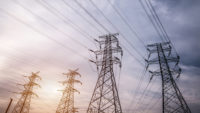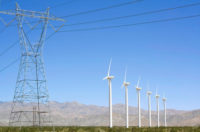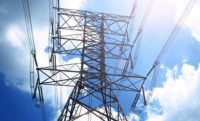At its Sept. 21 meeting, the Federal Energy Regulatory Commission approved four natural gas projects, while deferring two others—reinforcing an apparent impasse among agency commissioners over how they should consider greenhouse gas emissions and climate change in project review. Observers speculate that the issues spurred FERC to drop the project approvals from the agenda of its July meeting, without comment.
Set to move forward is a second two-train LNG project, estimated at $13-billion, at the existing Sempra Infrastructure export terminal site in Port Arthur, Texas. Also approved was a boost in export capacity for the Calcasieu Pass LNG project in Louisiana and small increases in existing pipelines in the state and in Minnesota.
The meeting also included lengthy discussion by FERC commissioners and others of action needed, including new and upgraded infrastructure, to prevent a repeat of the near-failure of some eastern U.S. electric and gas systems during extreme cold weather last December. It included those of Consolidated Edison Inc., the largest utility in New York state.
During that weather event, 90,000 MW of generation was out at the same time, which represents 13% of the entire eastern interconnection—the grid system that covers two-thirds of North America (see map). Con Edison, which serves the New York City metropolitan area, took emergency action by tapping into available LNG.
Gas-fired capacity accounted for 63% of the outages, followed by coal and lignite at 23%, oil at 4%, wind at 4% and nuclear, solar and hydroelectric at 1% each, according to details shared by FERC staff of a soon-to-be released outside analysis. About 10 GW of gas-fired outages occurred when gas supplies were curtailed by pipeline operators, staff said.
In a statement, FERC and nonprofit North American Electric Reliability Corp. (NERC), the report author, said natural gas pipeline pressures “dropped largely because of freeze-related production declines” of Marcellus and Utica shale gas. Con Edison “faced reliability-threatening low pressures on its delivery pipelines, forcing it to declare an emergency and use its own liquefied natural gas facility to maintain service,” FERC and NERC officials said.
Need for accelerated grid investment already is a key Con Edison concern, according to its just issued 2023 Climate Change Vulnerability Study, which notes a faster climate-change affected rise in temperature than noted previously. The report said the utility, which has invested more than $1 billion in resilience measures over the last decade, could face increased system load and decreased capacity.
The U.S. power system has become more reliant on natural gas, with gas-fired capacity growing 11% to 564.2 GW in mid-2023 from 508.2 GW in mid-2016, said FERC.
A failure “would have been catastrophic,” Willie Phillips, the agency's acting chairman, told attendees. In a statement, the office of New York Gov. Kathy Hochul noted “very high reliability standards and safety requirements for our gas distribution system.”
Infrastructure Fixes Ahead?
Jim Robb, NERC president and CEO, called for urgent action on the interdependence between bulk electric and natural gas systems, “including need for sufficient and reliable gas and electric infrastructure to sustain energy reliability.” Its analysis of the cold-weather event, including details not previously disclosed, listed 11 recommended actions to help prevent future risks.
The problem is linked to the “gas/electric” conflict, said Mark Christie, a FERC commissioner. He noted that gas systems set up for retail customers are now used heavily to generate electricity. “Of course, we need more infrastructure, but the question is how to get more pipelines,” he said. Commissioner James Danly said the NERC report indicates the U.S. has failed to build enough natural gas infrastructure, largely due to agency roadblocks. Both are Republican appointees.
Alison Clements, a commissioner who is a Democrat, agreed about the need for more infrastructure but also spoke to fixes for existing systems. “Congress needs to give us instructions,” she said.
Phillips stressed that someone must have authority to establish and enforce natural gas reliability standards. "It should not take five winter storms in 11 years to show us the gravity of the situation,” he said, also noting a need for boosted inter-regional transmission power transfers.
Legislation just introduced by Sen. John Hickenlooper (D-Colo.) and Rep. Scott Peters (D-Calif.) would require grid operators to be able to transfer 30% of peak electrical loads to an adjacent region.
“This damning assessment from FERC and NERC should be a wake-up call,” said Christy Walsh, senior attorney for the Natural Resources Defense Council.
Greenhouse Gas Emissions
FERC's Danly approved the Sempra LNG project but said in a separate opinion that “there are “no accepted tools or methods" to use to determine the significance of greenhouse gas emissions. Clements said the agency should decide the “important unresolved issues” relating to such assessments.
The project approvals came as the White House announced on Sep. 21 a directive for agencies to expand use of the metric to weigh societal damage cost of the emissions, now applied to regulations, in budgets and procurements and in environmental reviews "as appropriate." The directive does not appear to provide added guidance to FERC in determining emissions significant, market observers told S&P Global.
Decisions were delayed on two large projects in Brownsville, Texas—a $12-billion LNG export terminal owned by Next Decade and affiliated $2.4-billion, 135-mile pipeline; and Glenfarne Energy’s estimated $4-billion LNG plant to produce about 4 metric tons per year.
The Glenfarne project will use a green LNG design to eliminate most carbon dioxide emissions, with electric motor compression driven by renewable power. It is expected to have less than half of typical LNG export project emissions in the U.S., its developer said.
Earlier FERC approvals of both projects were challenged in federal court by the Sierra Club, with the U.S. appellate court in Washington, D.C., directing the agency to explain whether environmental law requires it “to apply the social cost of carbon protocol or some other analytical framework” to projects.






Post a comment to this article
Report Abusive Comment